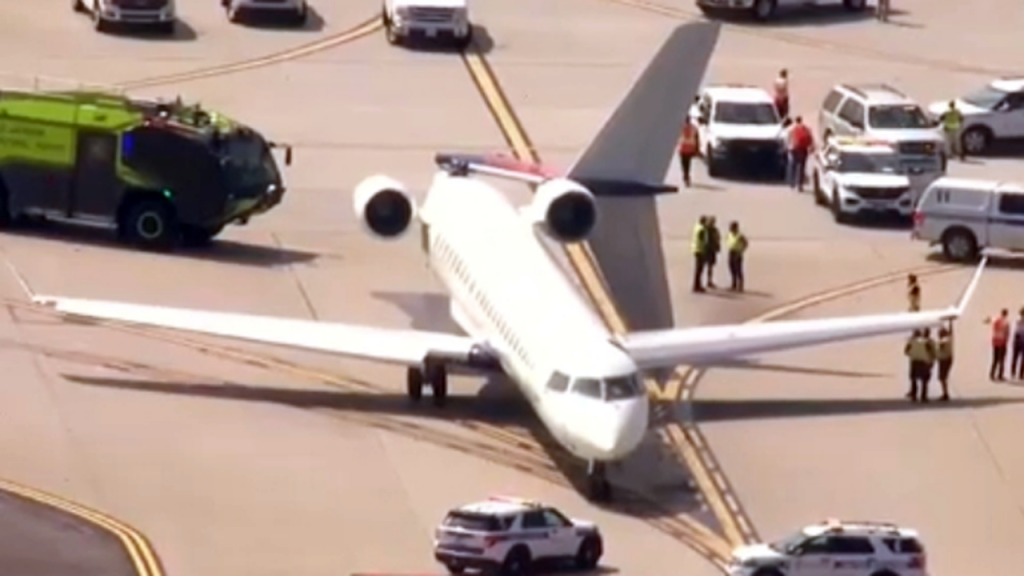The Federal Aviation Administration reported that a Delta Airbus A350 and an Endeavor Bombardier CRJ900 jet collided on the tarmac at Atlanta’s Hartsfield-Jackson Atlanta International Airport. The incident occurred while Delta Flight 295 was taxiing for departure, resulting in its wingtip striking the tail of Endeavor Air Flight 5526. The collision caused heavy damage to the tail of one of the planes, with the vertical stabilizer appearing to have been severed from the aircraft. Images on social media show the aftermath of the collision, sparking concern among passengers and others at the airport.
Meteorologist Jason Adams, who was on board one of the planes involved in the collision, described the experience as terrifying. He shared details of the incident on social media, mentioning the metal scraping sounds followed by loud bangs. Despite the alarming situation, Adams reassured that there was no fire or smoke, and everyone on board was unharmed. Both Delta and Endeavor issued statements confirming the collision and the subsequent damage to the aircraft. The airlines emphasized that there were no reported injuries and that customers would be accommodated on alternate flights.
The FAA announced that an investigation into the incident would be conducted to determine the cause of the collision. The agencies will examine the circumstances that led to the planes clipping each other on the intersecting taxiways at the Atlanta airport. Delta, in its statement, expressed cooperation with the National Transportation Safety Board (NTSB) and other authorities involved in the investigation. The airline also informed that there were a total of 221 customers on Flight 295 to Tokyo and 56 customers on Flight 5526 to Lafayette and that no additional operational adjustments were expected at the time.
The collision between the two aircraft occurred in the morning on September 10th at Hartsfield-Jackson Atlanta International Airport. The Delta Airbus A350 was on its way to Tokyo, while the Endeavor Bombardier CRJ900 was headed to Lafayette, Louisiana. Passengers on both flights witnessed the aftermath of the collision, with the damaged plane’s tail and wing being visibly affected. The incident raised safety concerns among travelers and aviation industry professionals, highlighting the importance of thorough investigations to prevent similar accidents in the future.
As news of the aircraft collision spread, authorities reassured the public that there were no injuries resulting from the incident. Both Delta and Endeavor airlines prioritized the safety and well-being of their customers, providing alternative travel arrangements and support to those affected by the collision. The focus shifted towards understanding the circumstances that led to the planes coming into contact with each other and implementing measures to prevent such occurrences in the future. The collaboration between the FAA, NTSB, and the airlines involved aimed to gather information and insights to enhance aviation safety and prevent similar incidents from happening again.
In conclusion, the collision between the Delta Airbus A350 and the Endeavor Bombardier CRJ900 on the tarmac at Hartsfield-Jackson Atlanta International Airport raised concerns about aviation safety and the need for thorough investigations into the incident. While there were no reported injuries and passengers were safe, the damage to the aircraft highlighted the risks associated with air travel. The prompt response by the airlines and authorities to address the situation and support affected customers demonstrated a commitment to passenger well-being and safety. By working together to understand the causes of the collision and implementing preventive measures, the aviation industry aims to enhance safety standards and prevent similar accidents in the future.


